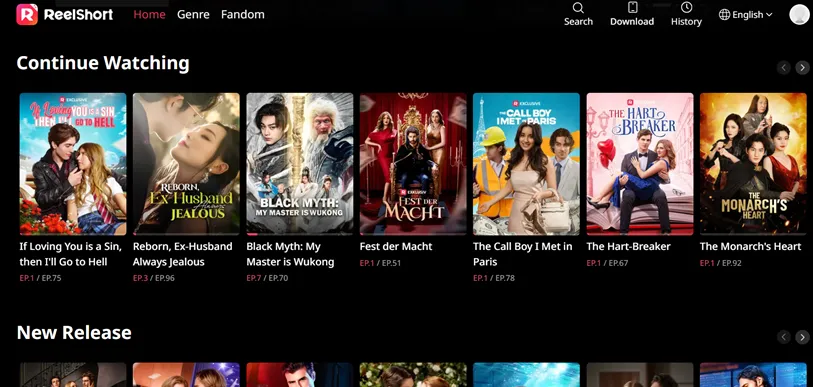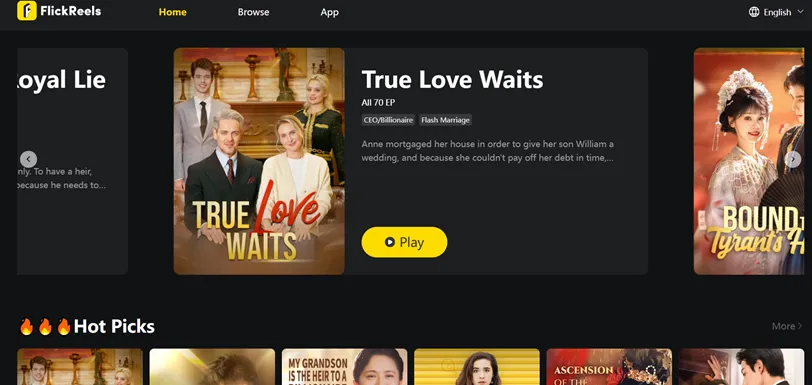
The Opening Scene: A Genre Born for the Scroll
Imagine this: you’re standing on a packed subway train, your stop is five minutes away. You open your phone, launch a streaming app, and press play on a mini drama. Within seconds, you’re immersed in a love story that unfolds with the urgency of a blockbuster, but it’s over just as your train pulls into the station. This is not just entertainment—this is a revolution in mobile viewing.
Short drama has become a defining genre of digital entertainment in China, catering to the ever-shrinking attention spans of mobile-first audiences. With billions glued to their phones daily, China leads the world in mobile video consumption. Short dramas—also known as microdramas or mini dramas—perfectly align with that demand, combining concise narratives with high emotional stakes in a matter of minutes.
Algorithm-Driven Hits: How Platforms Create Demand
Unlike traditional film and TV, these mini dramas are built for algorithms. Platforms like Kuaishou, iQIYI, and Douyin (TikTok’s Chinese counterpart) rely heavily on data to curate content, with real-time feedback dictating what gets pushed to millions of viewers.
Retention metrics like “audience engagement in the first 30 seconds” have become vital. If a mini drama can hook viewers in half a minute, it stands a chance of going viral. This algorithm-driven approach allows content to be quickly adapted based on user behavior—turning data into creative direction and fueling a continuous loop of supply and demand.
Inside the Script Room: The Rise of the 3-Minute Screenwriter
Behind these addictive short dramas are teams of specialized screenwriters trained to deliver a full narrative arc in 3 to 5 minutes. These creatives are experts in storytelling economy—where every second counts.
It’s not uncommon to see job listings in China specifically recruiting “microdrama writers” or “3-minute plot specialists.” Many of them now use AI tools to help outline beats, predict audience sentiment, and even auto-generate pacing suggestions. This fusion of tech and creativity enables writers to test ideas rapidly while still connecting emotionally with viewers.
Monetization Models: From Paywalls to Virtual Gifts
Far from being a budget alternative to traditional series, China’s short drama ecosystem has proven to be incredibly lucrative. Platforms employ a variety of monetization strategies, including:
- Pay-per-episode microtransactions
- VIP-only early access
- Brand/product placement within episodes
- Livestream Q&As with actors, funded by fan tips or gifts
One standout example: a 10-episode short drama about a CEO falling for his secretary went viral on Douyin and earned over ¥10 million in its first week through fan tips, merchandise sales, and exclusive behind-the-scenes content.
Going Global: Exporting Bite-Sized Culture
China’s short drama phenomenon isn’t staying domestic. As these quick-hit series continue to gain global attention, efforts are underway to localize content and adapt culturally resonant themes for broader audiences.
Subtitled and dubbed versions of mini dramas are popping up on Southeast Asian, Middle Eastern, and even Western streaming services. Some companies are forming co-productions with foreign studios to blend storytelling elements and expand cultural reach. The world is increasingly ready for compact, emotionally charged stories—and China is leading the export.
The App Economy: Platforms Powering the Revolution
Several key platforms are driving the growth of short drama content, each with a unique approach:
1. ReelShort
An international platform known for collaborative productions between Chinese and U.S. studios. ReelShort focuses on delivering serialized drama with cliffhangers designed to hook global viewers.

2. DramaBox
Targeting younger audiences, DramaBox features youth-centric themes, trendy storytelling, and Gen Z-friendly formats. Think high school romances, fantasy worlds, and relatable slice-of-life tales.
3. FlickReels
A rising global player in the short drama space, FlickReels offers HD mini dramas available anytime, anywhere. Its sleek app interface and multilingual support have made it increasingly popular among viewers seeking emotional storytelling in a bite-sized format.

4. MoboReels
A more experimental platform, MoboReels tests interactive storytelling and AI-powered episode personalization—allowing viewers to shape outcomes and revisit stories with alternate endings.
Industry Voices: What Insiders Are Saying
Industry experts have embraced short drama as more than a passing trend. Here’s what some insiders say:
“Short dramas let us test ideas fast and fail fast. It’s a sandbox for innovation.” — Chen Yu, Director at MoboReels
“It’s not TV. It’s TikTok storytelling with feelings.” — Li Fang, Mini Drama Screenwriter
“The key is emotional resonance. You only have 3 minutes to make someone care.” — Zhao Min, Producer at DramaBox
These perspectives reflect how the industry views short drama as a testing ground for creativity, where agility and emotional impact trump high production budgets.
Conclusion
The rise of China’s short drama industry is more than a fleeting trend—it’s a signal of how digital storytelling is evolving in a hyperconnected world. In an era where attention is the most valuable currency, mini dramas offer a perfect balance of speed, emotion, and accessibility.
Whether it’s romance, suspense, or sci-fi, these compact narratives can leave just as strong an impression as hour-long episodes. With expanding global distribution, advanced monetization models, and new platforms like FlickReels championing the format, the future of entertainment may very well be measured in minutes—not hours.